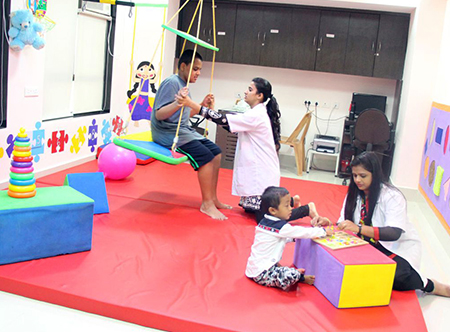The underlying concepts of sensory integration therapy has its basis in neuroscience, developmental psychology, occupational therapy and education. When problems in processing sensory information interfere with the child’s ability to perform or participate in age-appropriate activities of daily life or "occupations," occupational therapists use Sensory Integration therapy to help to address these concerns. Sensory integration therapy helps in:
Functional Improvement
SI therapy helps improve the functioning of an individual’s sensory system.
Safe Play
Sensory integration is facilitated by occupational therapists through "just right" opportunities for safe play and learning.
Increases Adaptiveness
The aim is to improve the ability of the brain to process sensory information so that the child will function more adaptively in their daily activities.
Sensory integration therapy is practiced by using play activities in ways designed to incorporate how the brain reacts to different stimuli like touch, sound, sight, smell and movement. Each therapy session is individualized and planned specifically to meet the child’s needs and sensory requirement. It enables the child to successfully interact with its surroundings. At NeuroGen, your occupational therapist would train you to practice and focus on therapy which is child directed, playful and challenging yet pleasant for your child. It is extremely essential to continue this therapy even after autologous bone marrow mononuclear cells grafting, as will stimulate your child’s senses appropriately, while also training the brain and encouraging the injected cells to improve brain plasticity. It encourages a more favourable outcome.

